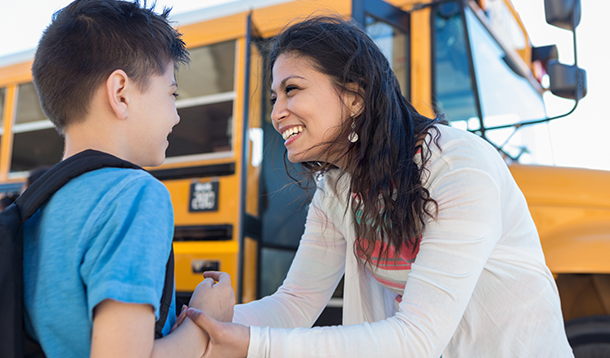
Back to school. Three words that evoke dread in many kids, and even doubly so in parents who have kids with special needs. Most of last year—my son's first—was spent floundering and getting to know a tricky public system. While there were some ups, my son's introduction into school life was a fairly rocky one.
In an attempt to make this year's transition smoother, I am doing what I can to ensure an easier start. Whether it's your child's first or fifth year, I'm a firm believer that a little preparation goes a long way. In that spirit I wanted to share some back-to-school tips for transitioning your special needs (or even a nervous or shy) child:
1. Since most teachers and staff are back on the job in the week before school starts, it's a great idea to visit the classroom. It needn't take long, but even a 10-minute visit will greatly reduce your child's anxiety when the first day rolls around. Depending where your child is at, a photo of both the classroom and the new teacher will serve as a reference point beforehand.
Not only will the teacher have a chance to meet your child without the distractions of other students and curriculum, you the parent land a rare opportunity to (briefly) highlight your child's strengths and some specific goals for the year ahead.
2. You will also want to prepare a profile of your child. Keep it simple, limited to bullet points (teachers have enough paperwork to sift through) about your child's learning style and any special interests. Once teaching gets underway, the teacher may be glad to have a 'cheat sheet' to refer to. Also worth making photocopies for other teachers who will work with your child, i.e. gym, music, etc.
3. But even before the meeting takes place, there are things you can do to help transition your child. By mid August I take my son along to the school playground for some casual fun without swarms of children. Again, the idea being that advance exposure helps reduce anxiety and boosts confidence, particularly if your child has any motor challenges. Imagine walking into a party or conference where you've never met anyone. Just setting foot in the building and knowing where the washrooms are, can ease some jitters.
4. If possible, obtain a timetable from the teacher, post it at home, and review it together before school starts. Organize materials for school in advance and let your child 'practice' packing/carrying/unloading.
5. Lastly, gradually turn back your child's body clock by pushing bedtime forward by 10-15 minutes a night in the weeks before school starts until it fits with their school hours. A tired child is more likely to be frazzled and overwhelmed.